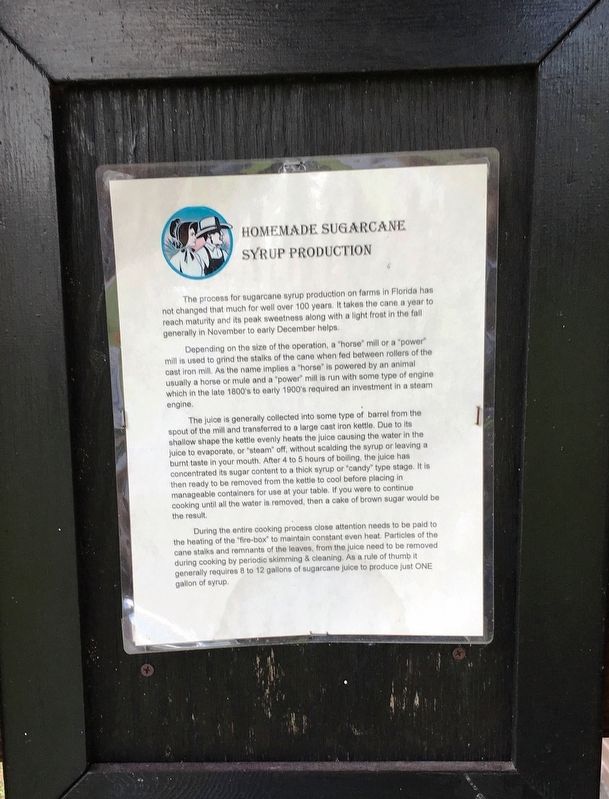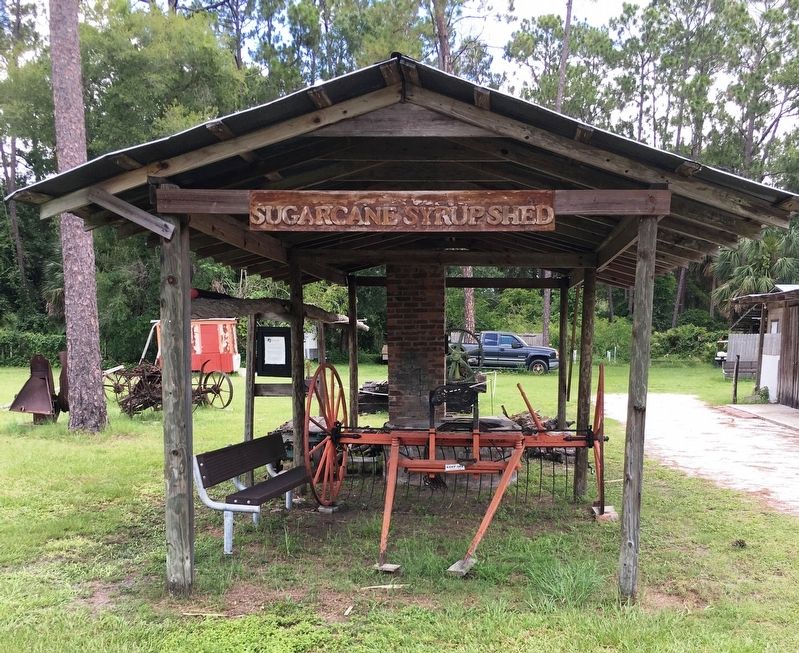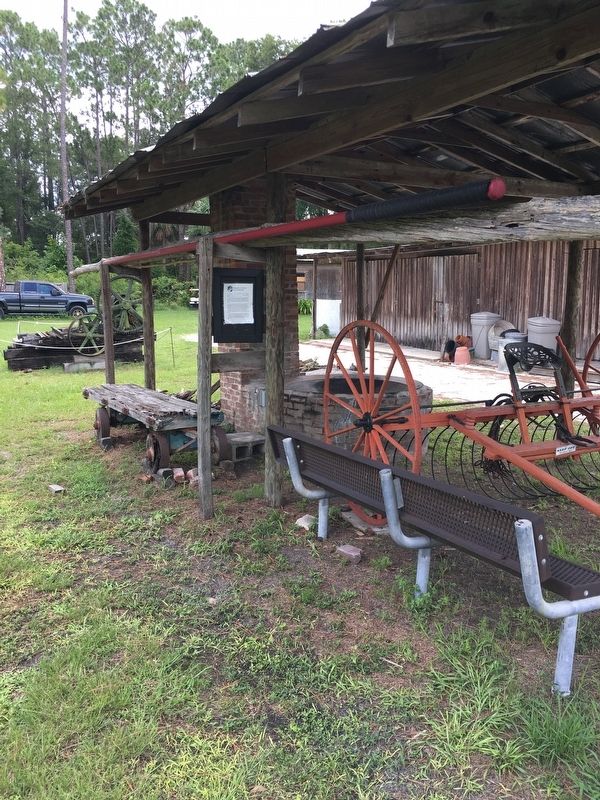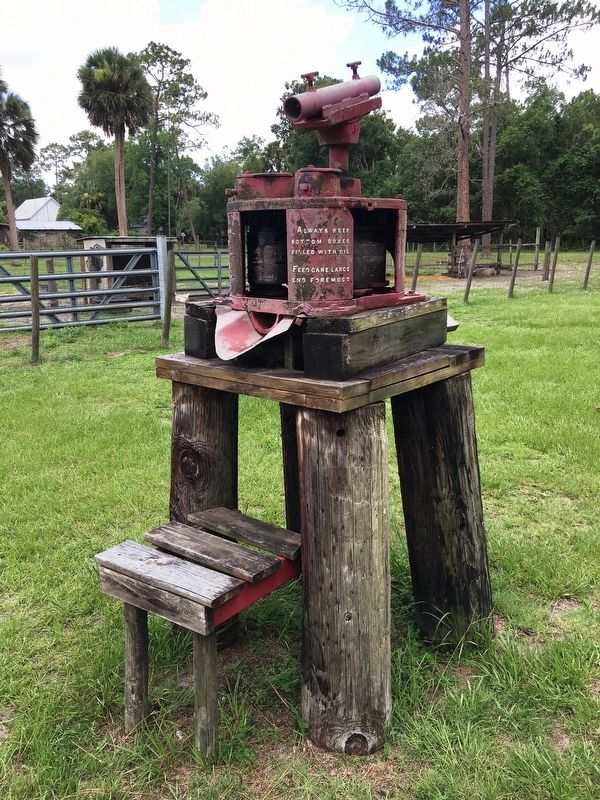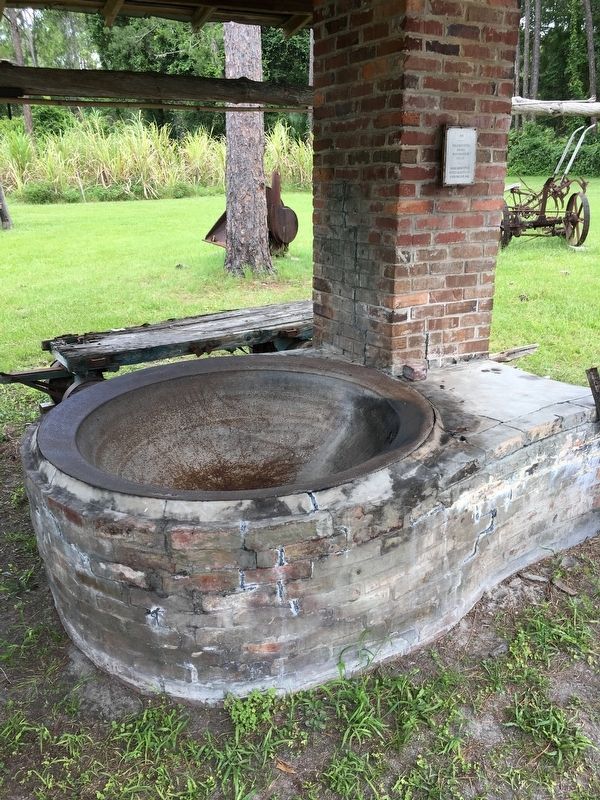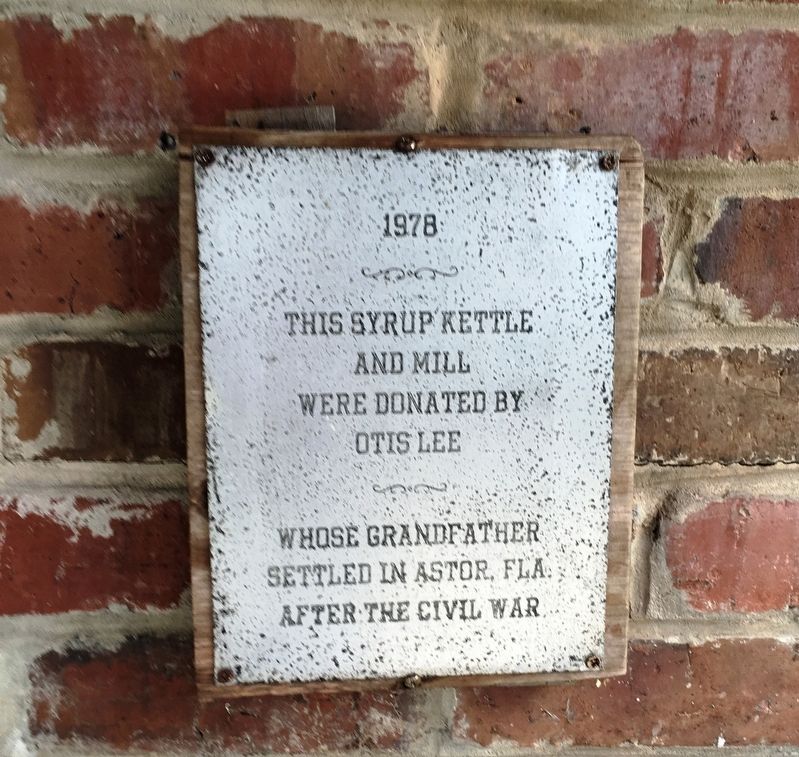Pierson in Volusia County, Florida — The American South (South Atlantic)
Homemade Sugar Cane Syrup Production
Barberville Pioneer Settlement
The process for sugarcane syrup production on farms in Florida has not changed that much for well over 100 years. It takes the cane a year to reach maturity and its peek sweetness along with a light frost in the fall generally in November to early December helps.
Depending on the size of the operation, a “horse” mill or a “power” mill is used to grind the stalks of the cane when fed between rollers of the cast iron mill. As the name implies a “horse” is powered by an animal usually a horse or mule and a “power” mill is run with some type of engine which in the late 1800’s to early 1900’s required an investment in a steam engine.
The juice is generally collected into some type of barrel from the spout of the mill and transferred to a large cast iron kettle. Due to its shallow shape the kettle evenly heats the juice causing the water in the juice to evaporate, or “steam” off, without scalding the syrup or leaving a burnt taste in your mouth. After 4 or 5 hours of boiling, the juice has concentrated its sugar content to a thick syrup or “candy” type stage. It is then ready to be removed from the kettle to cool before placing in manageable containers for your use at the table. If you were to continue cooking until all the water is removed, then a cake of brown sugar would be the result.
During the entire cooking process close attention needs to be paid to the heating of the “fire-fox” to maintain constant even heat. Particles of the cane stalks and remnants of the leaves, from the juice need to be removed during cooking by periodic skimming & cleaning. As a rule of thumb it generally requires 8 to 12 gallons of sugarcane juice to produce just ONE gallon of syrup.
Erected by Barberville Pioneer Settlement.
Topics. This historical marker is listed in these topic lists: Agriculture • Education • Parks & Recreational Areas • Settlements & Settlers.
Location. 29° 11.043′ N, 81° 25.387′ W. Marker is in Pierson, Florida, in Volusia County. Marker can be reached from Lightfoot Lane south of County Road 3, on the right when traveling south. Marker located within the Barberville Pioneer Settlement. Touch for map. Marker is at or near this postal address: 1776 Lightfoot Lane, Pierson FL 32180, United States of America. Touch for directions.
Other nearby markers. At least 8 other markers are within walking distance of this marker. Old Barberville Central High School (about 300 feet away, measured in a direct line); Lewis Log Cabin (about 300 feet away); Settlement Firehouse (about 400 feet away); Tomoka Turpentine Still (about 400 feet away); Convict Cage Wagon (about 400 feet away); Swedish Pioneer Memorial (about 400 feet away); Midway Methodist Church (about 400 feet away); Huntington Post Office (about 400 feet away). Touch for a list and map of all markers in Pierson.
Also see . . . Barberville Pioneer Settlement. Barberville Pioneer Settlement was founded in 1976 and is a private not-for-profit 501(c)(3) organization registered with the State Florida. The centerpiece of the Barberville Pioneer Settlement is the original Barberville Central High School (c 1919), a National Register of Historic Places site. Many historical buildings and artifacts that may otherwise have been destroyed have been relocated to the “Settlement’s” grounds. The site is also the original home of Volusia County’s oldest two story brick residence, the Joseph Underhill House (c 1879). (Submitted on June 21, 2019.)
Credits. This page was last revised on June 21, 2019. It was originally submitted on June 20, 2019, by Brandon D Cross of Flagler Beach, Florida. This page has been viewed 326 times since then and 29 times this year. Photos: 1, 2, 3, 4, 5, 6. submitted on June 20, 2019, by Brandon D Cross of Flagler Beach, Florida. • Bernard Fisher was the editor who published this page.
